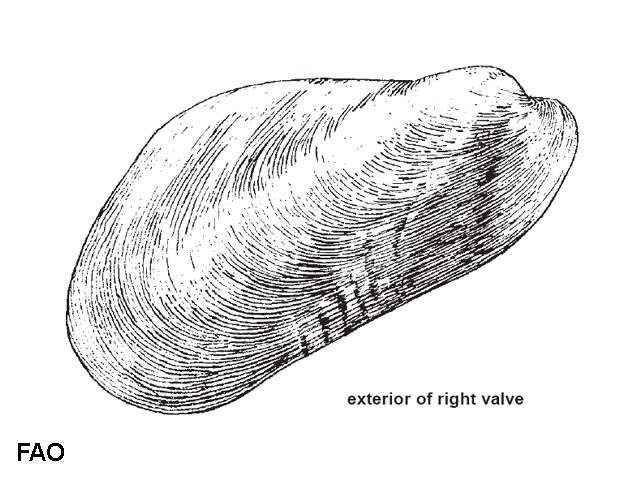| Mytilidae (sea mussels) |
| 13 cm TL (male/unsexed) |
|
benthic; marine; depth range 0 - 40 m |
| Indo-Pacific: from eastern Africa, to eastern Indonesia; north to Japan and south to Queensland and Western Australia. |
|
Shell relatively thin but solid, swollen, elongate-ovate and roughly trapeziform in outline. Anterior margin short, protruding anteriorly well beyond the inflated umbones, posterodorsal margin long, oblique in relation to ventral margin, slightly arched, forming an obtuse and rounded angle with the broadly rounded posterior margin. Ventral margin long and slightly sinuous, with a shallow concavity at about midlength of shell. Outer surface sculptured with numerous concentric growth marks. Periostracum generally smooth. Hinge line smooth, without teeth or crenulations. Anterior adductor scar present. Internal margins smooth. Colour: outside of shell yellowish brown. Interior pearly and off-white to purplish red. |
| On muddy and gravely mudflats (Ref. 821). Littoral and sublittoral to a depth of 40 m (Ref. 348). Byssally attached to pebbles and sand grains on sandy to muddy shores, only exposing the posterior margin of its shell (Ref. 125512). |
|
Not Evaluated (N.E.) Ref. 123251)
|
| harmless |
|
Source and more info: www.sealifebase.org. For personal, classroom, and other internal use only. Not for publication.

